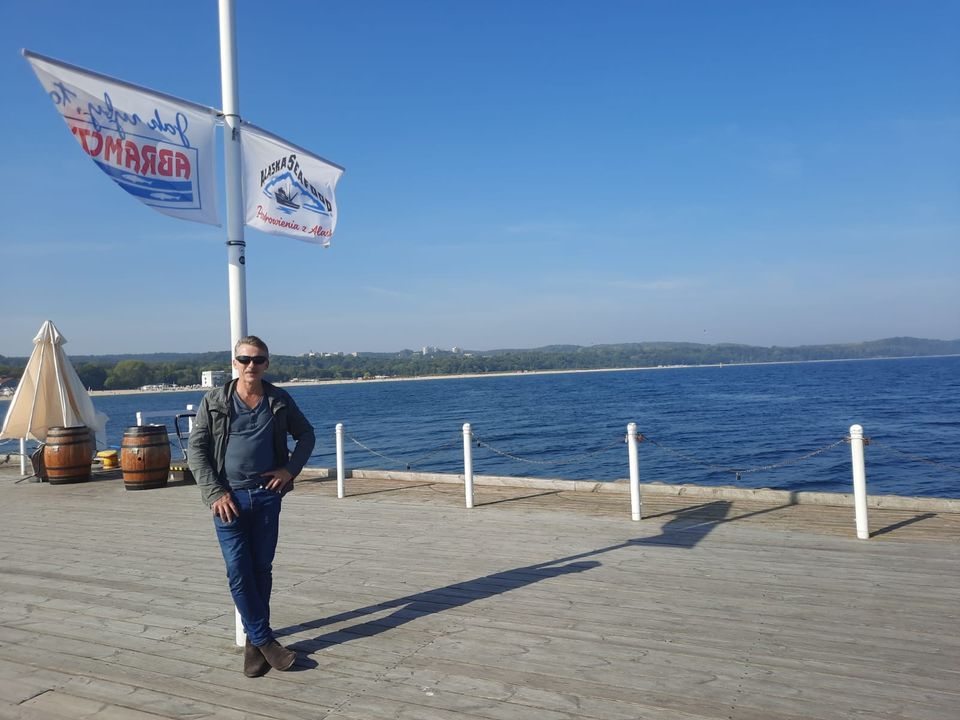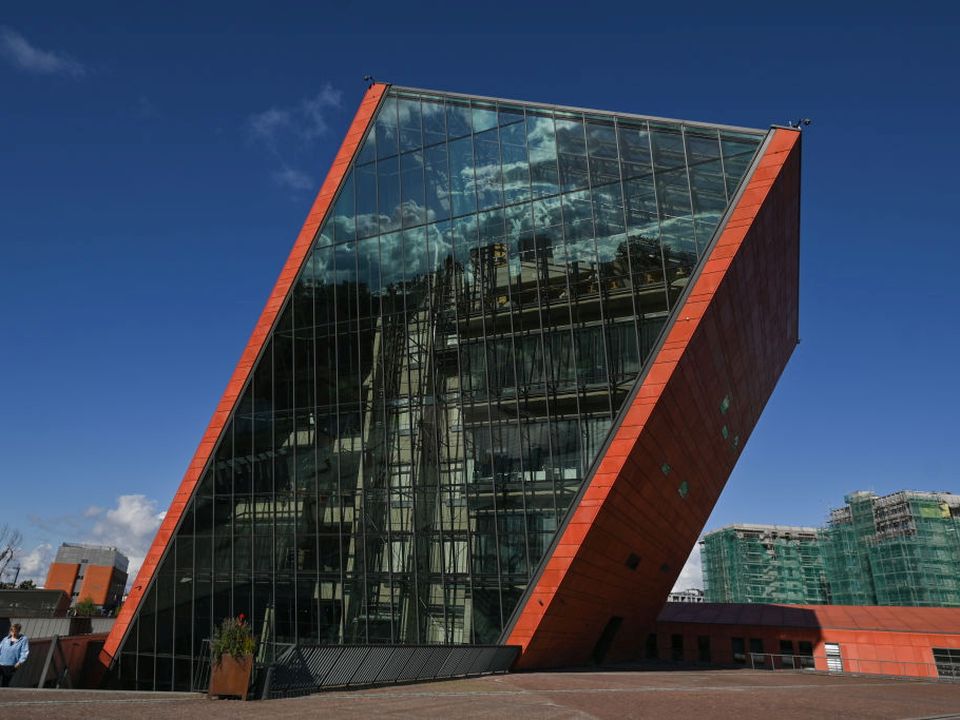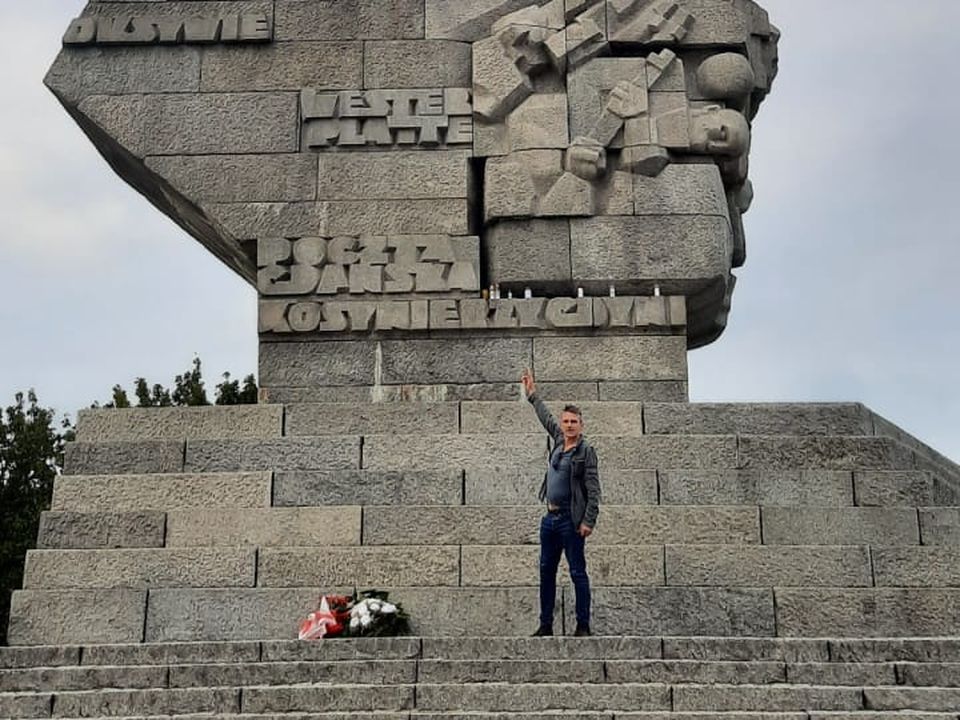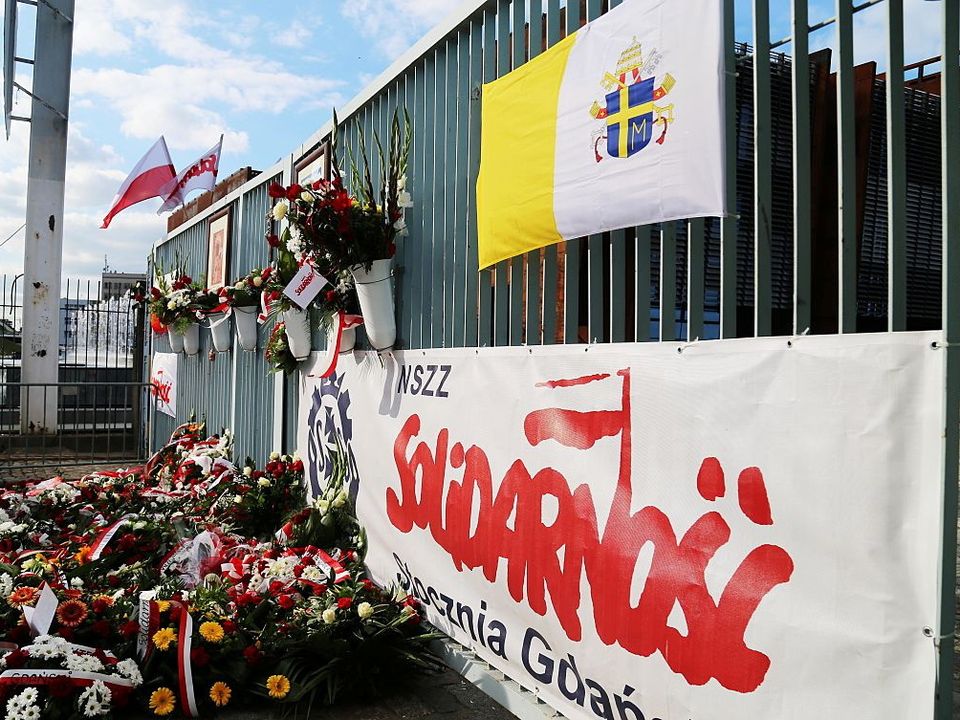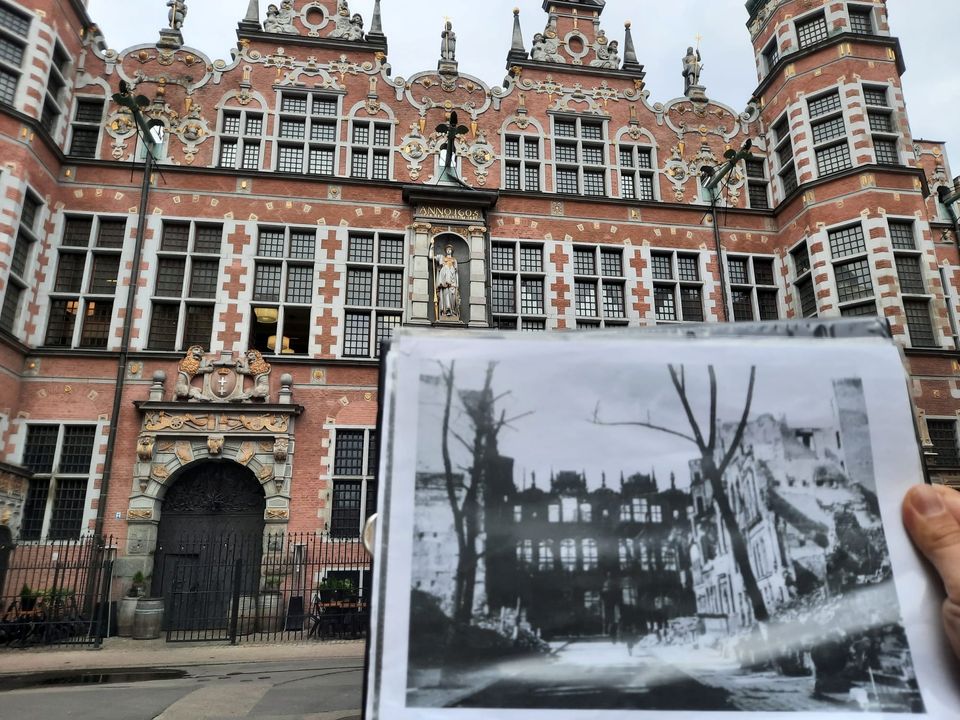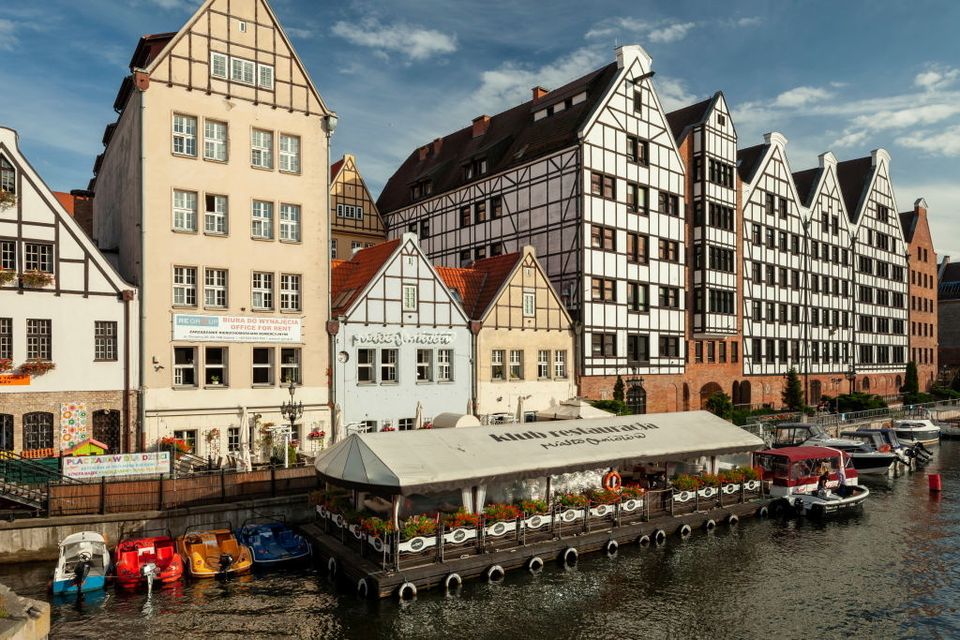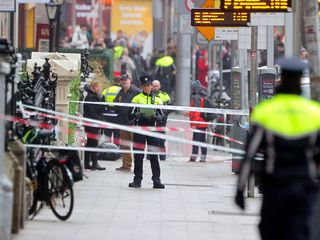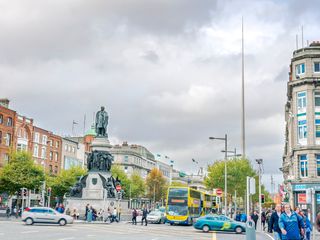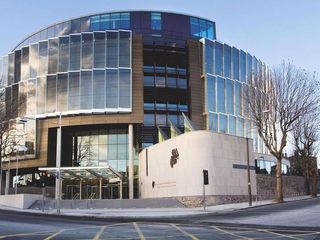Enjoy the history and sandy beaches in Poland’s picture-perfect Tricity area
You don’t usually think of long, soft, sandy beaches when you think of Poland, right? Yet here we are on the shoreline of the Westerplatte, a peninsula of land just outside the city of Gdansk, the country’s northernmost port, and if it was just a little bit brighter, I swear we could have been somewhere in the Mediterranean.
The beautiful white sand here stretches for several kilometres in either direction and in the summer, it is packed with locals and visitors.
At this time of year though, and although it has nothing to do with the temperature of the water, to my Irish ears the ‘Baltic’ Sea sounds appropriate enough.
Instead, we wander along the strand, watching figures bent over in the distance intently examining the sand under their feet. There is gold in these here parts, or more accurately, amber, which is known as Baltic Gold.
The striking Museum of the Second World War
This souvenir from the sea occasionally washes up here, usually in tiny amounts avidly scooped up by the locals, but sometimes in such massive blocks that it makes the lucky finder a very rich person overnight.
There are streets in Gdansk’s Old Town, known as the “Fifth Avenue of Amber” that are devoted to the trade of this mysterious material. One of them, Mariacka Street, which runs outwards from the imposing St Mary’s Basilica, features quaint boutiques and galleries where you can buy amber in the shape of rings, earrings, necklaces and any number of decorative items.
It is a picturesque location, with colourful flower beds and stone stoops outside the pretty shops and houses on a cobblestoned street, which makes it all the more poignant to remember that just 80 years ago, much of what you see now simply did not exist.
Occupied by the Germans from the very first moments of World War II to almost the last, it was the bitter house-to-house fighting they engaged in here in March 1945 with the oncoming Red Army that effectively razed Gdansk to the ground.
It was a bitter struggle, the culmination of six long years of war which began back out on the Westerplatte where the very first shots were fired on the morning of September 1, 1939.
At precisely 4.48am that morning, the German battleship Schleswig-Holstein, on the pretence of a courtesy visit to what was then the Free City of Danzig, suddenly opened fire on the tiny Polish garrison.
The 22-metre Westerplatte Monument, also known as the Monument to the Coast Defenders, looms over what is today a bucolic scene to commemorate the bravery of the Polish defenders of the Military Transit Depot that was once based here.
The Monument to the Coast Defenders
It is an evocative place and one of very special significance to the Poles who remember the defenders, many from other parts of Poland, who decided to fight and die for their homeland.
History is never far under the surface of this fascinating city, and the scars of was are everywhere. Back in the centre of the rebuilt Old Town, there are Russian words sprayed on a bullet-pocked wall, which, still legible, translate to read “no landmines here”.
The momentous events of those dark days are told in the incredible Museum of the Second World War, which features one of the largest exhibitions in the world devoted to the subject.
The building itself, with its impossibly sharp angles, is an arresting sight, and its 23,000sq/m of exhibition space, much of it located 14 metres underground, houses some of the most moving exhibits focusing on the civilian experience of the war.
The museum is only metres away from where another key moment in Polish — and indeed European — history took place, four decades after the end of the war.
It was here at the historic Gdansk (Lenin) Shipyard where a young electrician, Lech Walesa, made his name leading the strikes that would eventually become the catalyst for the fall of Soviet communism.
At the entrance to the shipyards is the famous Gate No2 where Walesa announced the deal with the communist government of Poland that would allow the creation of what would become the Solidarity movement trade union.
Houses on Granary Island in Gdansk
The historic events that took place here are symbolised by the huge and moving three crosses of the Monument to the Fallen Shipyard Workers of 1970 outside the gates, erected by the workers themselves to commemorate the 28 people killed here in earlier strikes.
Just beyond the gate is the striking European Centre of Solidarity, housed in a massive building that looks like the rusted side of an immense ship, the likes of which were once built here in this giant steel town.
Here, more immersive exhibits tell the story of how the workers rose up and their subsequent, bitter struggle before the fall of communism. Artfully created in a bright, cavernous space, the museum is where Walesa, a grandfatherly figure who still plays a part in the political life of his country, still has his offices.
From the rooftop terrace, you get a great view over the shipyards that, although much reduced from their former glories, are still in operation, while across the skyline cranes carefully restore what had once been known as the “Pearl of the Baltic”.
After the war, the inhabitants starte to meticulously put the city, now renamed Gdansk, back together, brick by brick. Even the ugly tarmac that the Soviets poured over the streets is being stripped back to reveal the original cobblestones beneath.
Everywhere along the riverfront, the former merchants’ houses have been rebuilt from scratch, giving it the feel of an eastern European Amsterdam. And all along Granary Island, where massive granaries were built to store grain before it was shipped from the port, are being converted into classy apartments and smart bars and restaurants.
Flowers in front of Gate No2
There is so much to see in this fascinating city, even after a full-on day tour, it felt like we were only scratching the surface.
The following day, we were off on a short drive just a few kilometres along the coast, to the elegant spa resort of Sopot, one of the three cities, alongside Gdynia, and Gdansk, that form the Tricity area.
Spared the devastation of World War II, this spa town looks pretty much as it did when the French military surgeon Jean Georg Haffner settled here to rest and recuperate after Napoleon’s defeat in Russia in 1812.
From the very first bath house he established here in this pretty seaside town, sprung an industry that attracts people from all over the world seeking respite from their ailments.
On what was a significantly warmer day, we walked out along its Brighton-esque pier — the longest wooden pier in Europe, apparently — where families posed for photos and shared ice cream.
The rebuilt armoury in Gdansk
Sticking 511 metres straight out into the Baltic, the pier’s wooden finger points directly towards a spit of land called Hel, just visible on the horizon.
Another popular day trip destination, locals still get a little kick out of saying, “Oh, you’re going to Hel”, or “I’ve been to Hel and back”. But on this spectacularly sunny autumn day, it all looks like a little piece of heaven.
TRAVEL FACTFILE
TRICITY, POLAND See poland.travel/en ■ RYANAIR fly direct from Dublin and Cork to Gdansk. The quickest way into the city centre is an airport taxi. ■ NEIL stayed in the very central four-star Sadova Hotel in the stunning Old Town. ■ EAT at The Fisherman restaurant in Sopot; and Papieroovka Cider Garden and Zafishowani in Gdansk.

